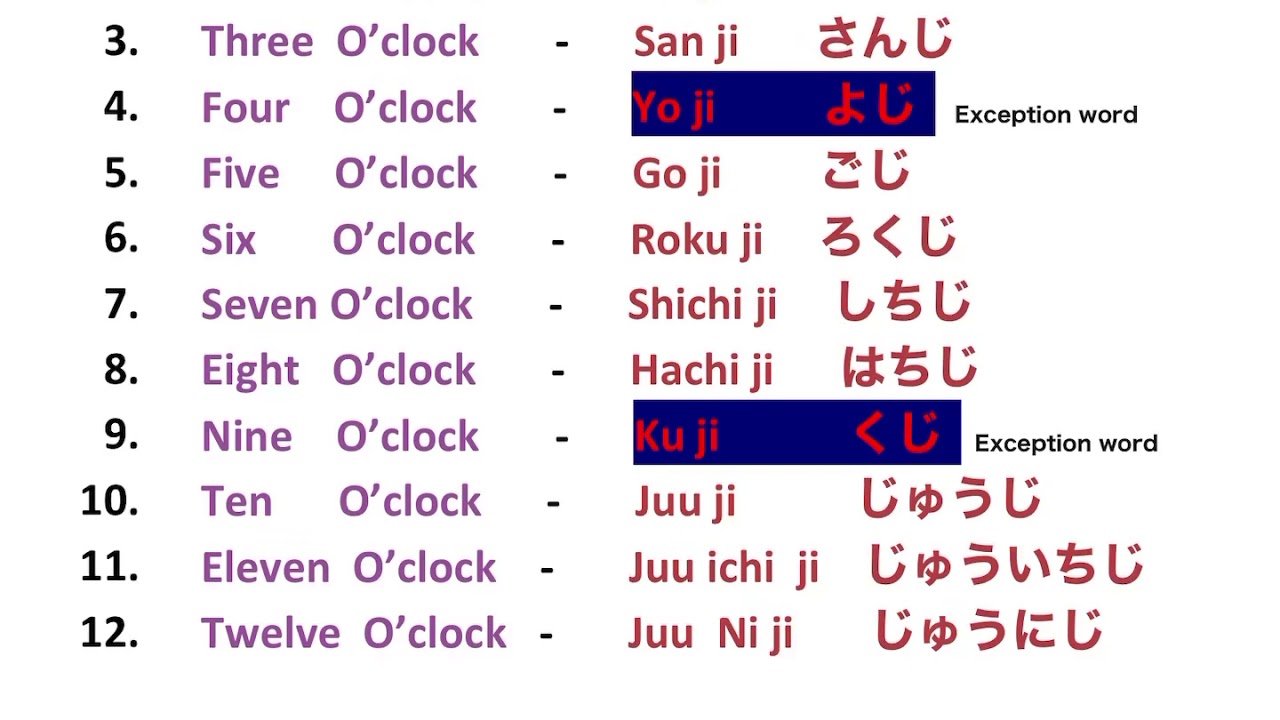Telling Time in Japanese — Saying Hours & Minutes on a Clock
Welcome to our comprehensive guide on telling time in Japanese! At [Your Website Name], we are dedicated to providing you with the most accurate and informative content on a wide range of topics, including learning how to express time in the Japanese language. If you’re eager to explore the intricacies of telling time in Japanese, you’ve come to the right place.
Understanding Time in Japanese Culture

Before we delve into the specifics of expressing hours and minutes in Japanese, it’s essential to grasp the cultural significance of time in Japan. Time management and punctuality are highly valued in Japanese society. Being able to convey time accurately is not only practical but also a sign of respect for the culture.
Expressing Hours in Japanese

Let’s begin by discussing how to convey hours in Japanese. The Japanese language has a unique way of counting hours, and it differs from the standard 12-hour clock system used in English-speaking countries. In Japan, they use a 24-hour clock system, also known as “ji-dokei” (時計). Here’s a breakdown:
- Using Numbers: To express the hours from 1 to 12, you simply say the number followed by “ji” (時). For example, 3 o’clock is “san-ji” (三時), and 8 o’clock is “hachi-ji” (八時).
- Afternoon Hours: To indicate afternoon hours, you can add “gozen” (午前) for the morning or “gogo” (午後) for the afternoon. For instance, 2:30 in the afternoon is “gogo ni-ji han” (午後二時半).
- Midnight and Noon: Midnight is “mayonaka” (真夜中), and noon is “hiru” (昼). You can use these terms to specify 12:00 AM and 12:00 PM, respectively.
Conveying Minutes in Japanese

Now, let’s move on to how you can express minutes in Japanese. Unlike hours, minutes are relatively straightforward. Here’s how you can do it:
- Using Numbers: To express minutes, simply add the number of minutes after the hour, followed by “pun” (分). For example, 5 minutes past 2 o’clock is “ni-ji go-fun” (二時五分).
- Quarter and Half Past: To indicate quarter past, use “ji han” (時半), and for half-past, use “ji han” (時半) as well. For instance, 3:15 is “san-ji juu-go-fun” (三時十五分).
Additional Resources

For those looking to delve deeper into this topic, we highly recommend visiting , where you can find the latest updates and more extensive information on “Telling Time in Japanese — Saying Hours & Minutes on a Clock.” Don’t forget to follow for further exploration of this fascinating subject.
Frequently Asked Questions (FAQ)

Now, let’s address some common questions that often arise when learning to tell time in Japanese:
Q1: Is it necessary to use “gozen” and “gogo” when expressing time in Japanese?
A1: While it’s not mandatory, adding “gozen” (午前) for the morning and “gogo” (午後) for the afternoon can help clarify whether you are referring to AM or PM.
Q2: How do I say “midnight” and “noon” in Japanese?
A2: Midnight is “mayonaka” (真夜中), and noon is “hiru” (昼).
Q3: Are there any regional variations in telling time in Japanese?
A3: The basic principles of telling time in Japanese are consistent throughout the country, but some regional dialects may have slight variations in pronunciation.
That concludes our guide on “Telling Time in Japanese — Saying Hours & Minutes on a Clock.” We hope this comprehensive article has been a valuable resource for you. If you have any more questions or need further assistance, please don’t hesitate to reach out. Happy learning!
key words
- learn japanese
- how to say hello in japan
- say i love you in japan

No Responses